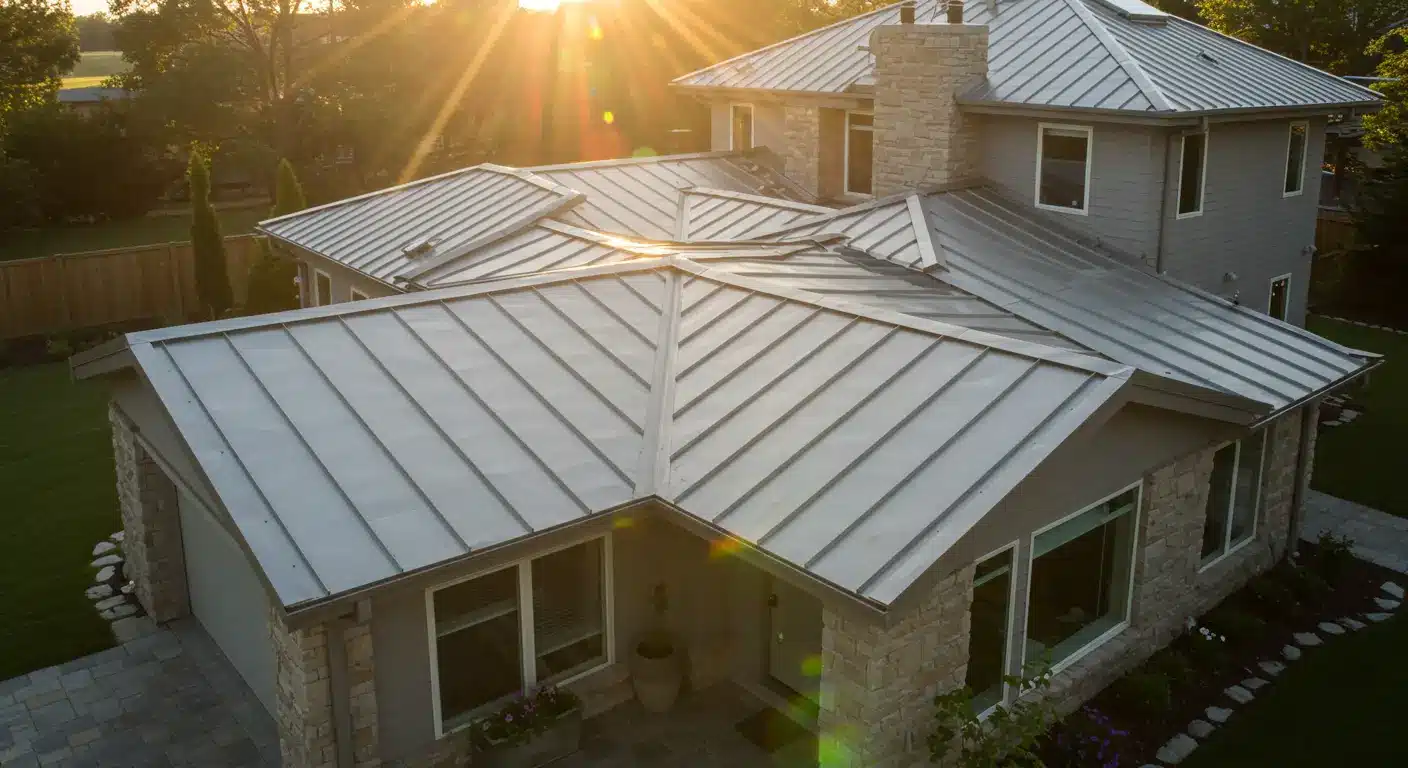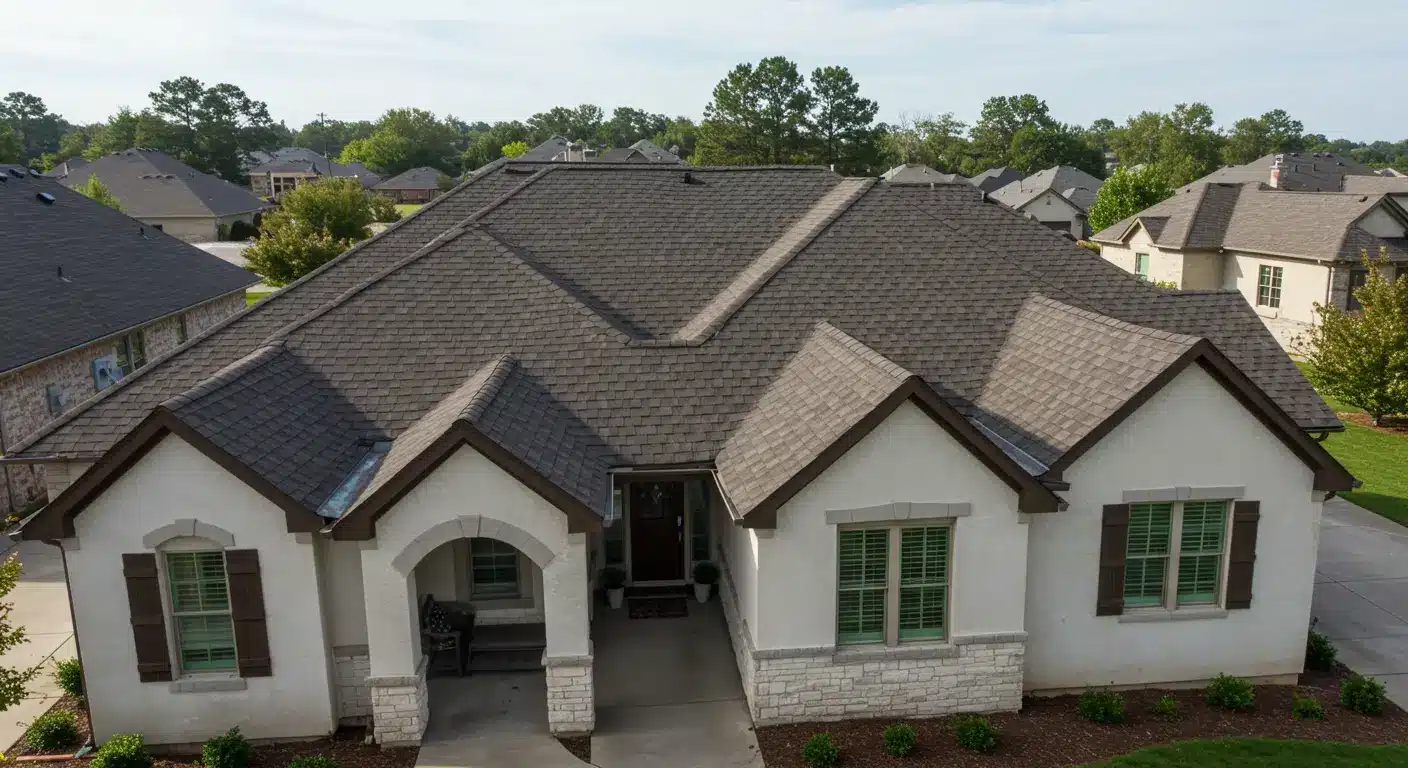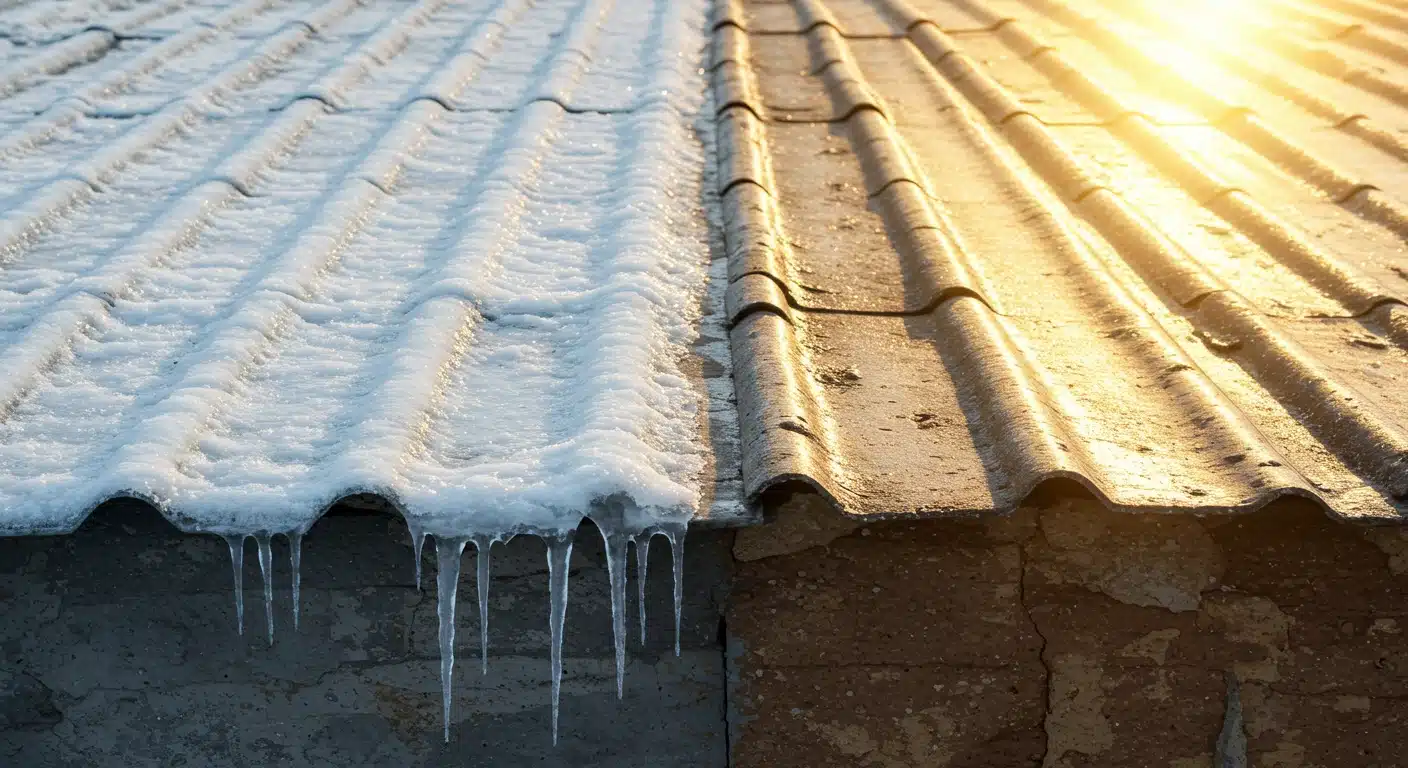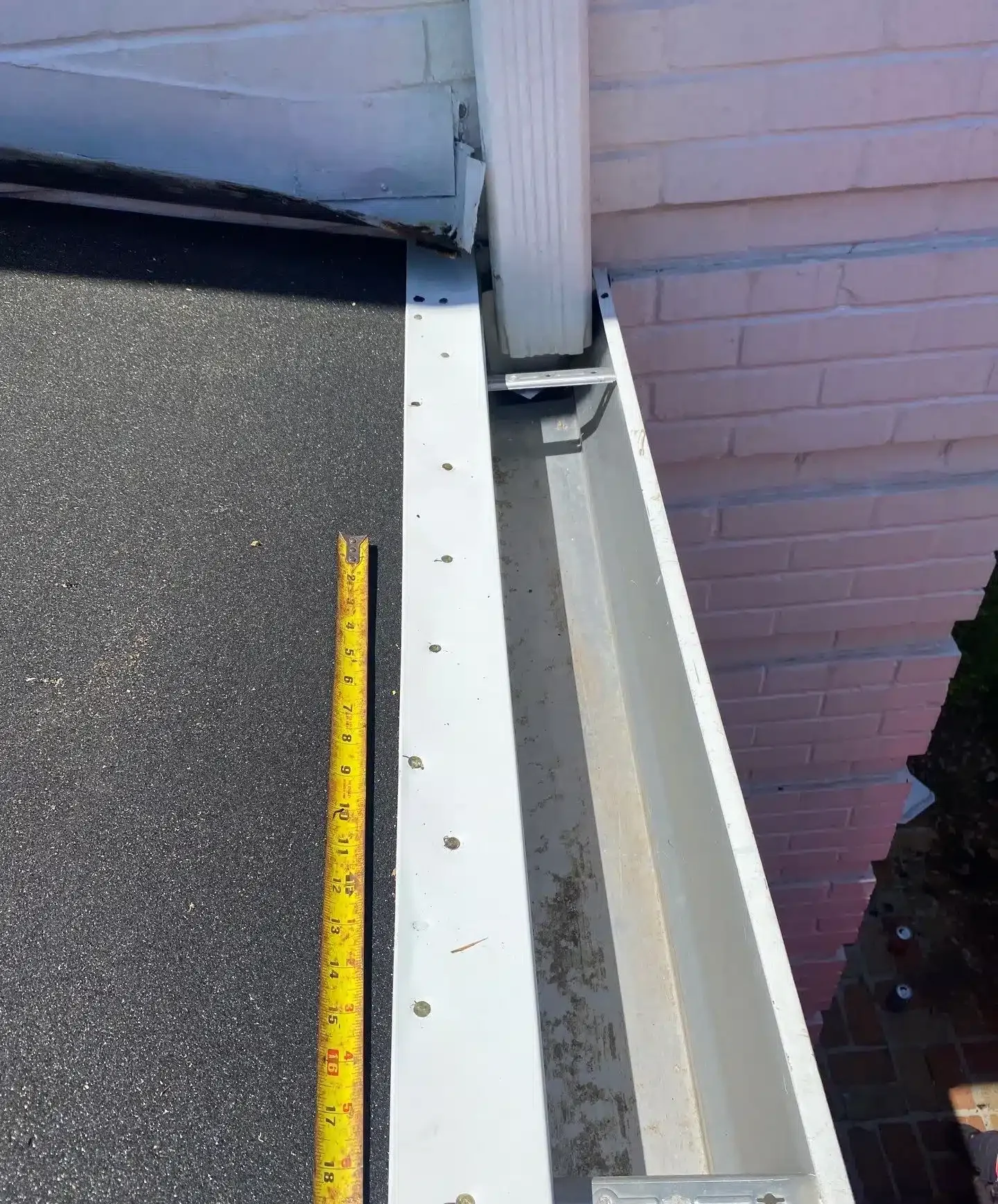When investing in a roof, homeowners want something that offers long-term durability, minimal maintenance, and protection against severe weather. Metal roofing often comes out on top, but how long does a metal roof last? In this comprehensive guide, we’ll explore the lifespan of various metal roofs, the factors that impact their longevity, and what homeowners in Louisiana should watch out for.
Understanding the Lifespan of a Metal Roof
Metal roofs are known for their impressive longevity. On average, a properly installed and maintained metal roof can last 40 to 70 years, depending on the material and environmental conditions.
Lifespan by Metal Type:
- Galvanized Steel: 40–60 years
- Aluminum: 50 years or more
- Copper and Zinc: 70–100+ years
- Standing Seam Metal Roofs: Up to 75 years with minimal maintenance
These averages far surpass the typical 15–30 years for asphalt shingles. According to the Metal Roofing Alliance, metal roofs are engineered for exceptional longevity when properly installed.
Types of Metal Roofs and Their Pros & Cons

Understanding your metal roofing options helps you choose the best fit for your property and climate.
1. Galvanized Steel Roofs
- Pros: Durable, cost-effective, rust-resistant with proper coating
- Cons: Prone to corrosion if the coating wears off
2. Aluminum Roofs
- Pros: Lightweight, rustproof, great for coastal homes
- Cons: Softer, more prone to denting
3. Copper Roofs
- Pros: Longest lifespan, beautiful patina over time
- Cons: Very expensive, premium installation required
4. Zinc Roofs
- Pros: Self-healing, ultra-durable
- Cons: High cost, limited availability
5. Standing Seam Metal Roofs
- Pros: Hidden fasteners reduce leak risk, sleek appearance, and wind resistance
- Cons: More expensive than corrugated panels
What Affects the Longevity of a Metal Roof?
Several factors influence how long your metal roof will last:
1. Material Quality
Galvanized metal roofing and aluminum options are among the most common in residential use. Choosing high-quality materials upfront can add decades to your roof’s life.
2. Installation Workmanship
A metal roof is only as good as its installation. Hiring a certified, experienced contractor like Lone Wolf Roofing ensures optimal performance.
3. Climate and Weather Conditions
In storm-prone states like Louisiana, hurricanes, hail, and heavy rain can accelerate wear and tear. That’s why storm damage restoration is a key service we offer.
4. Roof Slope and Ventilation
Proper slope allows rain to run off quickly, and ventilation prevents moisture buildup, both critical to roof longevity.
5. Regular Maintenance
Routine inspections and maintenance can catch small issues before they shorten your roof’s lifespan. Learn more in our maintenance tips for metal roofs section below.
Metal Roof vs. Shingles: Which Lasts Longer?
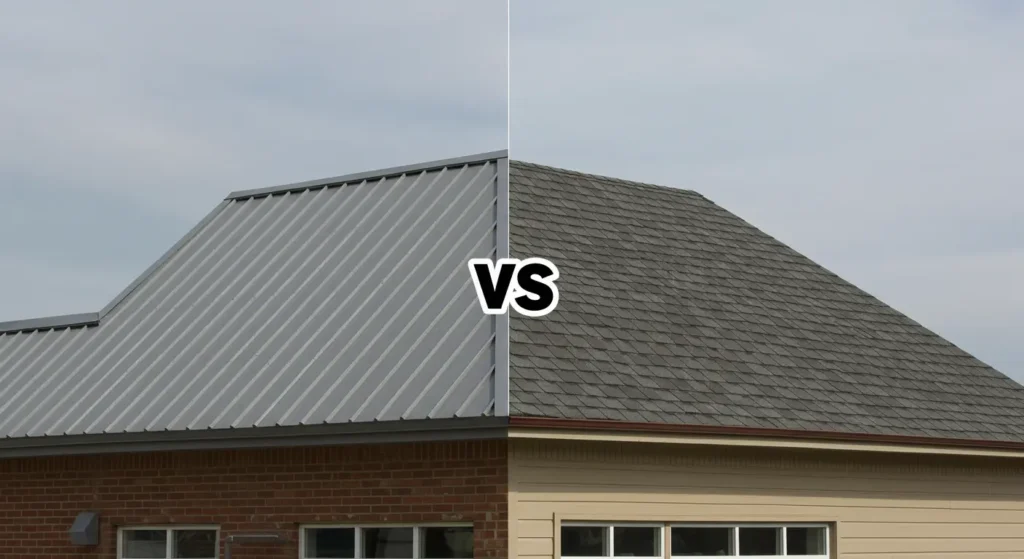
If you’re comparing roofing materials, longevity is a major consideration:
- Asphalt Shingles: 15–30 years
- Metal Roofs: 40–70 years (or more)
Not only does metal roofing last longer, but it’s also more energy-efficient. According to the U.S. Department of Energy, metal roofs reflect solar heat, reducing cooling costs by 10–25%.
Metal roofing also holds up better in storms, fire, and extreme temperature swings, especially valuable in places like Louisiana, where summer heat and hurricane season take a toll.
How Louisiana’s Climate Impacts Metal Roof Longevity
Homeowners in Louisiana face unique challenges when it comes to roofing durability:
- High humidity: Can accelerate corrosion if protective coatings degrade
- Salt air near coastal regions: Increases rust risk, especially for cheaper metal products
- Heavy rain and hurricanes: Metal roofs resist uplift and leaks better than shingles
- Intense UV exposure: Can degrade paint and coating faster, so UV-resistant finishes are essential
Investing in high-quality materials and routine inspections will protect your roof from these regional stressors.
How to Maintain a Metal Roof for Maximum Lifespan
A little upkeep goes a long way in making your metal roof last. Here are expert tips to maintain your investment:
- Inspect after storms: Check for dents, loose panels, or punctures.
- Keep it clean: Remove debris and leaves that trap moisture.
- Seal fasteners: Ensure screws and seams remain watertight.
- Clear gutters: Prevent overflow that can damage the edges.
- Recoat when needed: Protective coatings may wear over time. Consider reapplying every 10–15 years.
When in doubt, book a Free Roof Inspection Today with our expert team.
Signs It’s Time to Replace Your Metal Roof
Even durable metal roofs eventually wear out. Watch for these signs:
- Rust or corrosion in widespread areas
- Loose or missing panels
- Severe denting or impact damage
- Leaks or insulation issues
- Fading or chalking of the finish
When these appear, a professional assessment is critical. Depending on severity, repair vs. replacement may be the best option.
Step-by-Step Metal Roof Inspection Checklist
Here’s a basic DIY checklist you can follow, or leave it to the pros at Lone Wolf Roofing:
- Check ridge caps and flashing for gaps or rust
- Look for rust streaks or bubbling paint
- Inspect fasteners and seams for loosening
- Clear gutters and check for granules or debris
- Check the attic for signs of leaks or moisture
- Document any storm damage
- Schedule a professional inspection annually
Why Metal Roofs Are Worth the Investment
While upfront costs are higher than shingles, metal roofs provide:
- Longer lifespan
- Lower maintenance
- Better energy efficiency
- Higher resale value
- Stronger storm resistance
Explore our blog on roof replacement cost to understand the value over time. According to the Metal Roofing Alliance, homeowners report high satisfaction and cost-effectiveness over decades.
Conclusion
So, how long does a metal roof last? With proper installation and care, most metal roofs easily surpass 40–70 years. For homeowners in Louisiana facing harsh weather, investing in a reliable, long-lasting metal roof is a smart move.
Trust Lone Wolf Roofing to help you protect your home with expert inspections, storm repair, and high-quality installations.
Book a Free Roof Inspection Today and extend the life of your roof with peace of mind.
Frequently Asked Questions
What is the life expectancy of a metal roof?
Most metal roofs last between 40 and 70 years. Copper and zinc options can last even longer.
Do metal roofs last longer than shingles?
Yes. While shingles may last 15–30 years, metal roofs can double or even triple that lifespan.
What can shorten the lifespan of a metal roof?
Improper installation, neglecting maintenance, and extreme weather events like Louisiana’s hurricanes can reduce the lifespan.
How do you maintain a metal roof?
Perform regular inspections, remove debris, seal joints, and clean gutters. Routine care prevents early damage.
Is a metal roof worth the investment?
Absolutely. Metal roofs offer unmatched durability, energy efficiency, and long-term savings.
How do metal roofs perform in hurricanes?
Metal roofs are one of the best materials for high-wind environments. Standing seam systems, in particular, offer excellent uplift resistance.
Can I walk on a metal roof?
Yes, but carefully and only in certain areas. It’s best to hire a professional for inspections or maintenance to avoid damaging panels.
Will a metal roof make my home hotter?
Actually, no. Metal roofs reflect sunlight and help reduce heat gain, especially when coated with reflective finishes approved by the U.S. Department of Energy.
How much does a metal roof cost compared to shingles?
Metal roofs typically cost 2–3 times more upfront than shingles, but lower maintenance and energy savings often offset the investment. Learn more about roof replacement cost.
Do metal roofs rust?
Most modern metal roofs are treated with anti-corrosion coatings. Galvanized metal roofing, in particular, resists rust well if properly maintained.
How often should a metal roof be inspected?
At least once per year, or after any major storm. Regular inspections help detect minor issues before they become costly.
Are metal roofs noisy in the rain?
Not necessarily. When installed with proper insulation and sheathing, they are often no louder than shingles.
Can I install solar panels on a metal roof?
Yes. In fact, metal roofs are ideal for solar panel installation due to their strength and longevity.

